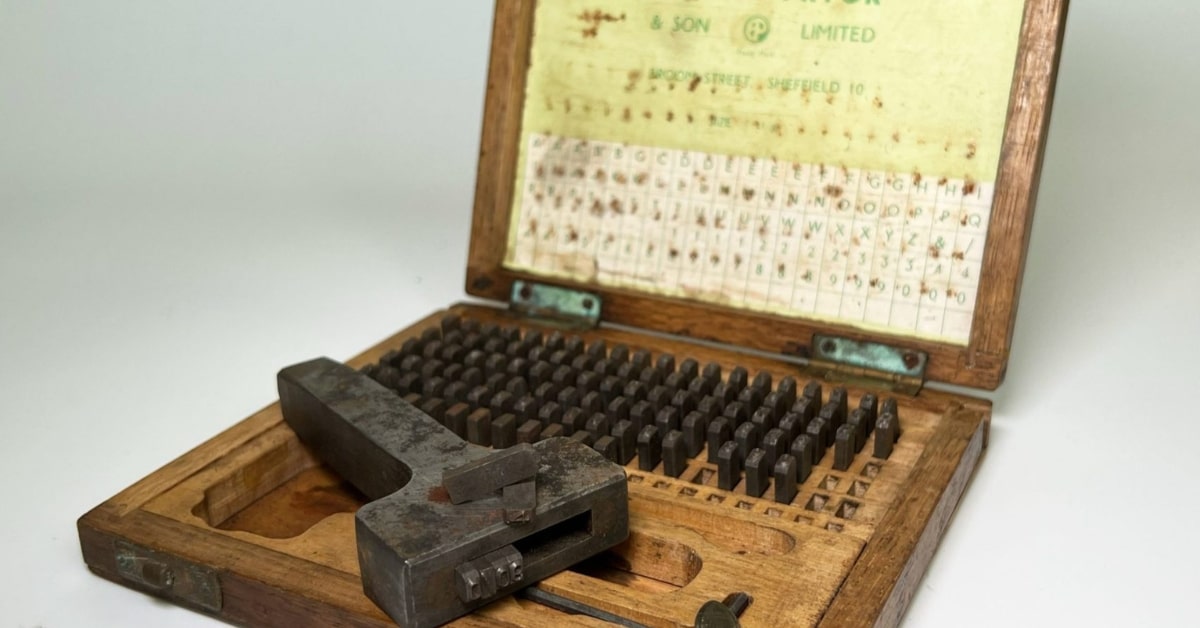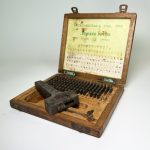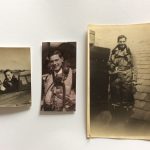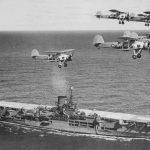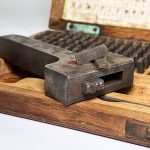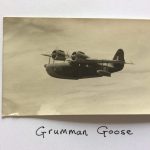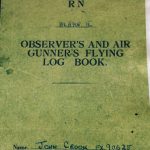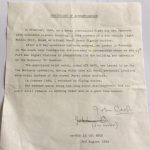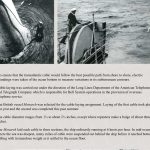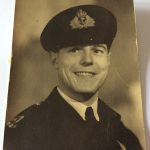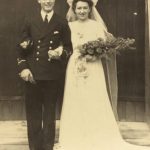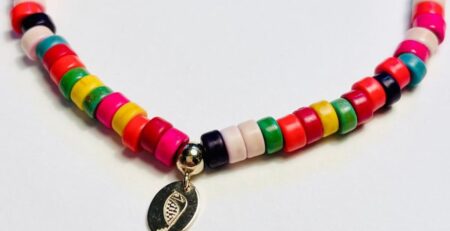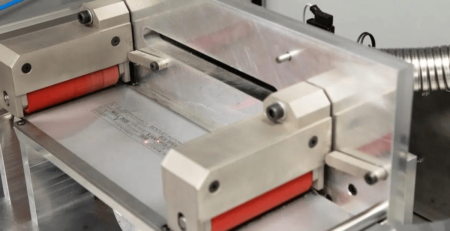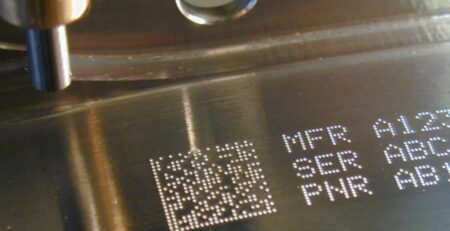Marking Memories – Interview with Hazel Hedley
Pryor was recently contacted by a lady called Hazel Hedley, who had inherited her father’s original steel type set and she was anxious to donate it back to Pryor, so it could be appreciated and valued as she believed her father would have wanted.
John Crook, known as Jack throughout his life, was born in Peckham, London in 1921. He lived on the same street as Iris East, the girl who would eventually become his wife. Times were hard as his father had died when he was only 8, leaving his mum with 6 children to raise.
There were times when he couldn’t go to school as he had to share a pair of shoes with his brother, yet in spite of this, he gained a scholarship to Wilson’s Grammar School where he excelled and was awarded the Schools Certificate.
Always interested in the science and technology of the day, he put together a ‘crystal cat’s whisker’ radio, which could receive radio signals. This boded well for his future career. Like many of the children of that time, he left school at 14 and started work at BT, as a telephone exchange engineer.
After the Second World War begun, he was commissioned as a Sub Lieutenant Naval Officer in the Fleet Air Arm, the flying division of the Navy. He trained as a Naval Pilot, but then switched to become a Flight Observer as navigation and signals were where his expertise lay.
He went to Trinidad aboard the Queen Mary ship, for air flight training, then Scotland and Canada for further training. Quite an adventure for a man who had lived all his life in Peckham.
He flew the famous Fairey Swordfish Bi-plane Bombers, amongst others. One of the first planes to carry anti-ship torpedoes and pioneer the Naval use of Air to Surface Vessel (ASV) radar. It was dangerous work and the Pilots knew that there was no certainty that they would eventually return home.
Jack was put on loan to the Army in February 1944, because of his extensive signal expertise and he took command of a six-vehicle Light Mobile Unit, known as a Royal Naval Beach Signal Section. This proceeded the D-Day allied invasion of Normandy.
It was his responsibility to set up the land to ship communications at Arromanches, to ensure the success of the D-Day mission. An account of his activities can be found in a letter he later wrote to the Imperial War Museum, which mentions the wristwatch he was given by the Army to enable him to synchronise his movements with his comrades.
“The associated wristwatch, coded ATP 9690 was issued to me for the Normandy operation, during which time all Naval personnel involved wore khaki instead of the normal Naval issue uniform.”
It was this wristwatch that is Hazel’s earliest memory of seeing the Pryor type set marks, imprinted onto the leather strap. Unfortunately, the leather strap has long since disintegrated, but the watch, that Jack donated to the Museum in 1994 during his lifetime, was said to be “in working order and a good timekeeper”.
Hazel remembers being fascinated, watching her father load the different letters in reverse from his steel type set, to achieve the right reading print and using a shoe last to support the objects he was marking by hitting the type sets with a hammer.
She recalls her father being a generous and truly kind man for whom family always came first. He appreciated the value of things and believed you should look after whatever you had got, so his purchase of the type set, before the war, would have been carefully considered.
He clearly thought it was a worthwhile investment for marking and keeping the things that were important to him, in the uncertain times ahead. Hazel believes that he would have been more than impressed that the company who manufactured the type set originally, are still producing them today and said: “He would have smiled and used one of his favourite phrases, very satisfactory!”
After the war, Jack returned to his role at BT and quickly progressed to becoming a High Executive Officer, taking part in the installation of the first Atlantic, underwater telephone cable from England to America and even in his later years, kept up a keen interest in technology.
Hazel believes that he would have been delighted that the story of his type set was being shared with a wider audience and would have been happy to see it on websites and social media, as he loved the idea that all this knowledge was so instantly accessible.
Pryor’s work with weapon traceability would have been “right up his street”, in her opinion and as a member of Mensa and a keen crossword fan, he would have been extremely interested to have learned more about their developing technology.
Throughout the dark times during the Second World War, Jack maintained a great sense of humour and regaled his family with stories of accidentally pitching his tent in Arromanches overnight, only to discover at first light, that he’d pitched it in the middle of a field full of mines!
It is this sense of humour, his strong family values, his ability to generate respect and love from the people around him and his belief in appreciating what you’ve got, that will remain with Hazel forever and we are sure that his great grandson, also named Jack in his memory, will continue these same traditions.
In loving memory of John (Jack) Crook 1921 – 2001, with special thanks to Hazel Hedley and family, for sharing his story.
